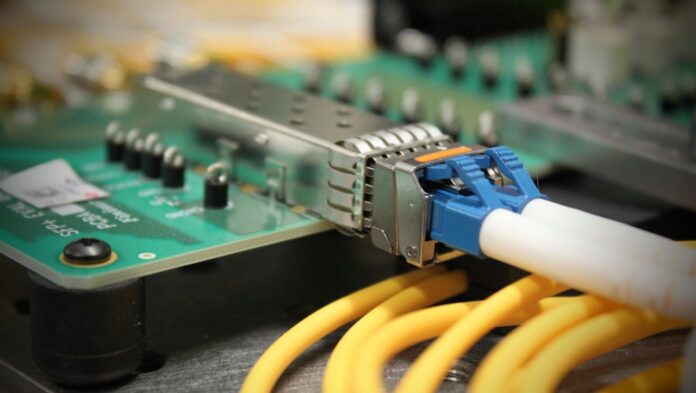In recent years, the demand for high-bandwidth data communications has exploded. This has led to the development of new optical transceiver standards, such as QSFP28 and QSFP-DD. Optical modules have become an essential part of modern networking systems, and continue to take an important role in the advancement of data communications technology. In this blog post, we will introduce you to the world of optical modules. We will discuss their history, their form factors, and their various electrical interfaces. We will also explain some of the most cost-effective optical transceivers standards currently in use. So if you’re interested in learning more about optic modules, then be sure to read on!
Transceiver modulation
In fiber-optic communication, modulation is the process of encoding information onto an optical carrier signal. The three most common modulation techniques are on-off keying (NRZ), pulse-amplitude modulation (PAM-4), and coherent modulation. In NRZ, the information is encoded as a series of pulses, with a “1” represented by a pulse and a “0” represented by the absence of a pulse. PAM-4 uses four different amplitudes to represent the two bits per symbol, while coherent modulation encodes the information using phase and amplitude modulation. Tunable lasers are sometimes used to allow optical modules to support various types of network switch equipment. In these applications, lasers can be tuned to different optical frequencies/wavelengths as required without purchasing optical modules for different wavelengths. By using one of these modulation techniques, fiber optic communication is able to transmit data at high speeds over long distances with minimal attenuation.
Transceivere MSA
The SFP, QSFP and CFP MSAs are standards developed by competing manufacturers for the form factor of high-speed digital signal transmission modules. The “C” in CFP stands for the Latin letterCentum, since the standard was developed primarily for 100 Gigabit Ethernet systems. The form factor and optical interface specifications of the three families are similar, but there are significant differences in the electrical interface. SFP+ is a popular optical module package, and large-scale switch devices can be equipped with SFP+ optical modules. One advantage of SFP+ is that it supports 8Gfc and 10Gfc input/output ports on a single lane PCIe card. 16G FC uses 2 lanes while 32G uses 4 lanes of a PCIe card. So, supporting multiple speeds on a single card simplifies inventory and board designs. Another advantage is that it can support longer reach optical interconnects using direct attach cable or active or passive optical modules with LC connectors. QSFP+ cages started to support full duplex 100G operation in 2014. Using PAM4 modulation, 50GBASE-LR4 and 56GBASE-FR ports were demonstrated in 2016. CFP2 uses a more advanced encapsulation ( Allison et al., 2011) which provides inherently lower EMI, improved alignment robustness, increased maximum transmitter launch power, has higher crosstalk immunity due to its use of dielectric materials with low dielectric constants and all this while allowing a reduction in size over previous generation CFP modules. CFP4 also inherits these enhancements while adding further mechanical improvements such as an integrated latching mechanism to avoid accidental opening of the cage during operation.”
The most popular sfp module
SFP-10G-T is the most popular SFP optical module on the market. It is a fourth generation IEEE standardized Base-T technology that is designed for reducing overall networking costs while improving its flexibility. The SFP-10G-T-X is interoperable with any device that supports 10GBASE-T, 1000BASE-T or 100BASE-TX standards such as IEEE 802.3an, 802.3ab, 802.3u. The SFP-10G-T-X is interoperable with other BASE-T transceivers that have (RJ-45 ports) and embedded BASE-T ports on servers and switches that comply with the aforementioned IEEE standards. The module supports the following three data rates: 100M/1G/10Gbps. All speeds may not be supported if there is a hardware limitation in the switch or network card. SFP+ modules can be used in SFP+ slots in accordance with SFF-8431 and SFF-8432 specifications. SFP+ modules can also be plugged into older SFP slots that are similar in size, but the module will only operate at reduced speed (1 Gbps or less). When an SFP+ module is inserted into an SFP slot, it is important to make sure that the switch detects it as an SFP module and not an SFP+ module to avoid overloading the port or initializing the SFP+ transceiver at reduced speed. The only way to insert an SFP+ in an SFP slot and have it function properly is by using a breakout cable assembly that consists of four SFP cages connected by a short cable. This type of breakout cable assembly typically comes with two connectors for 10GBASE-SR applications: LC for use in duplex mode and MTP/MPO for use in parallel mode. For additional information, please refer to the “Cabling Solutions” section below.





